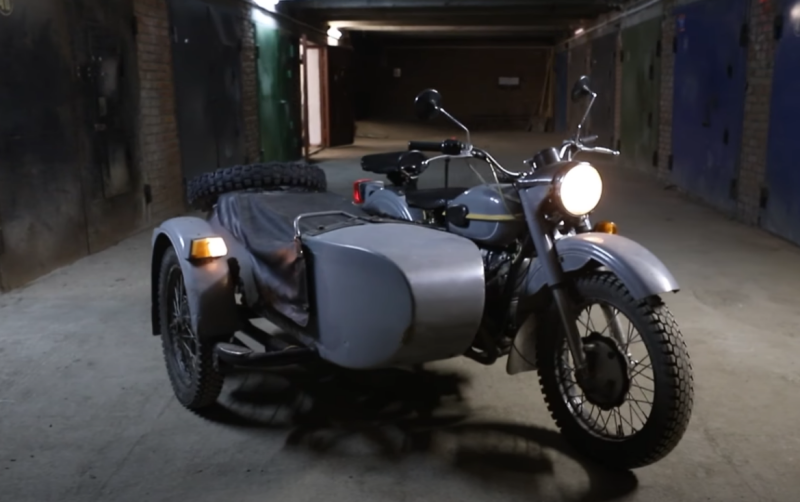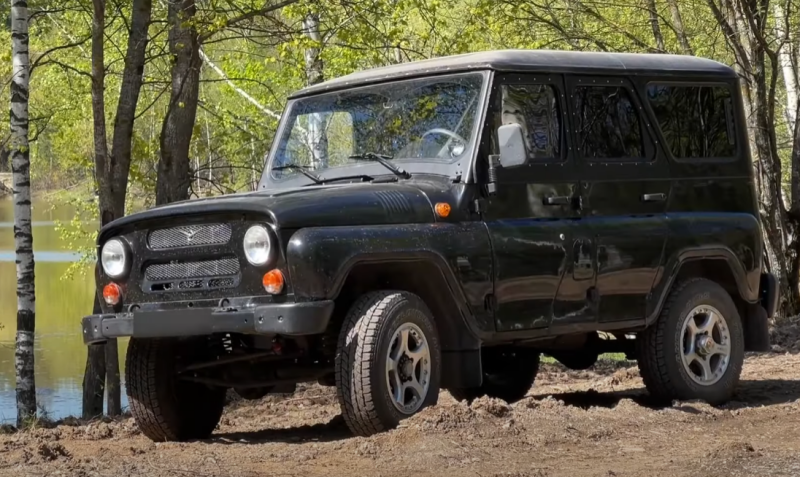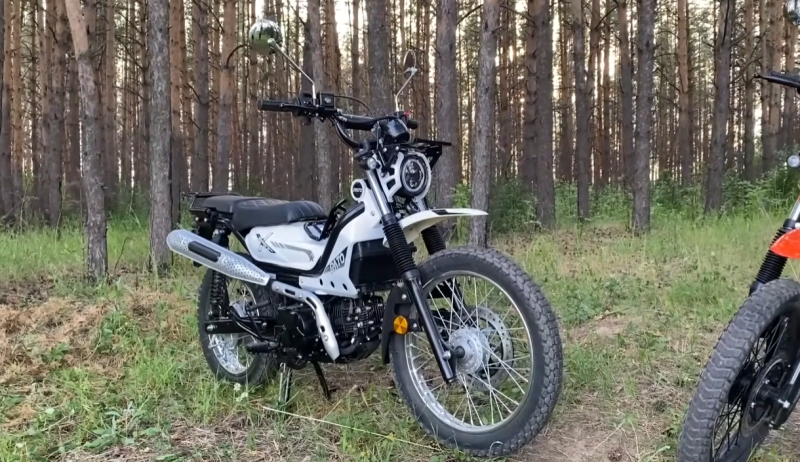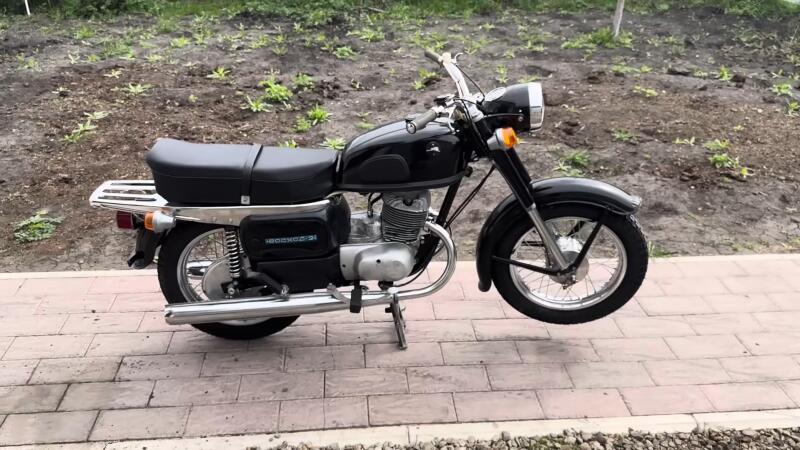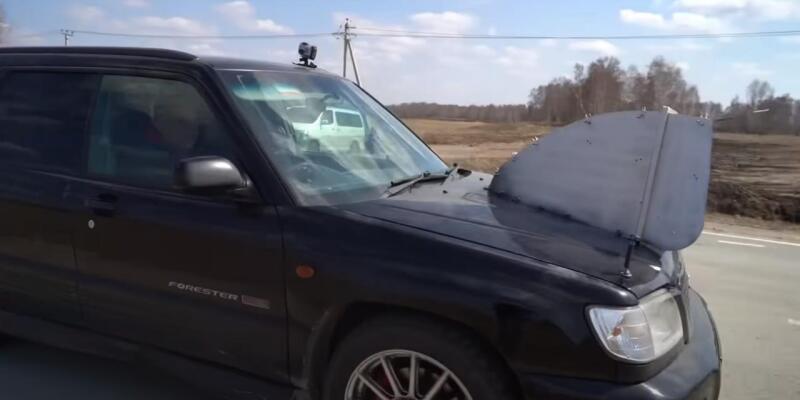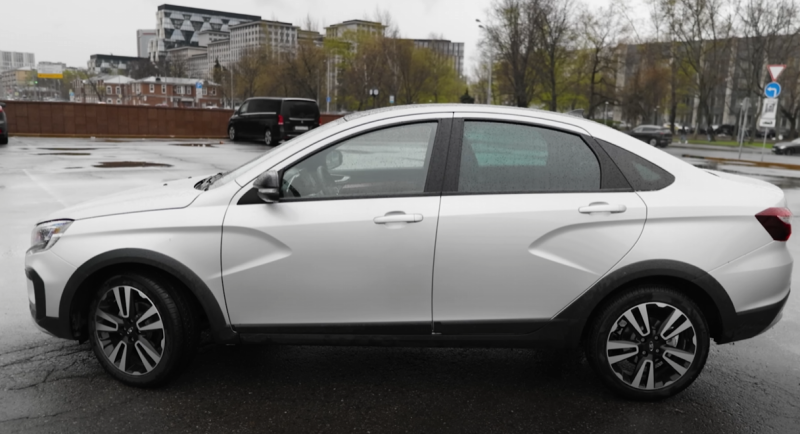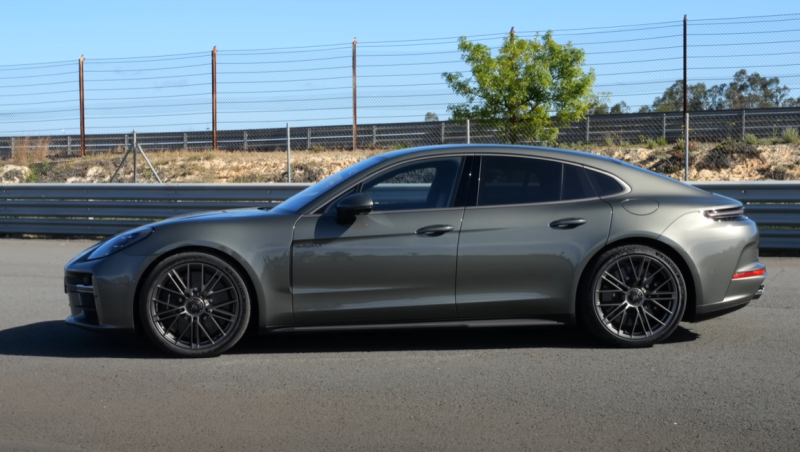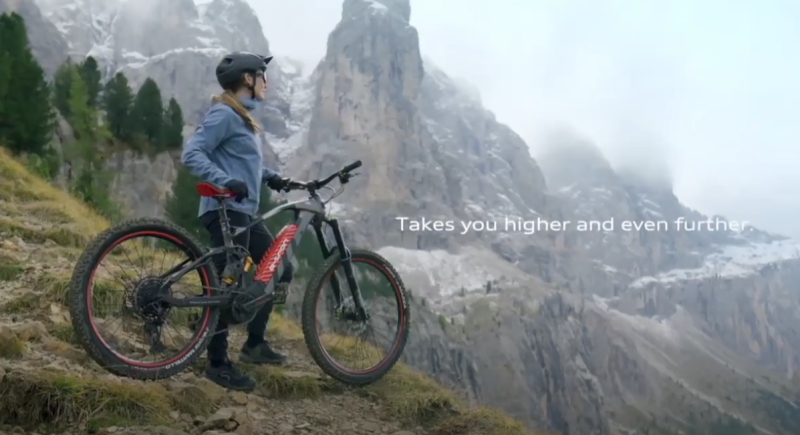By the way, Ural motorcycles are still being made. And even after the collapse of the USSR, IMZ produced many models. True, they were all small-scale - the manufacturer spent a long time searching for its niche.
Nowadays, domestic motorcycles with sidecars are more of a luxury. The cheapest model in the manufacturer’s line costs 1,65 million rubles. For this amount you can take two Lada Grants. It is not surprising that most of the bikes are sold for export.
 Motorcycles "Ural" and "Dnepr" after restoration, not restoration. Photo: Youtube.com
Motorcycles "Ural" and "Dnepr" after restoration, not restoration. Photo: Youtube.comBy the way, due to the introduction of economic sanctions against the Russian Federation, the final assembly of Ural motorcycles is carried out in Kazakhstan. And there are enough foreign components in them, and far from Chinese ones.
Today we will not touch on motorcycles that appeared after the collapse of the Soviet Union. Let us limit ourselves only to the period up to 1992.
The very first - M-72
The M-72 model appeared even before the start of the Great Patriotic War. The letter “M” in the index most likely means “Moscow”. The fact is that the motorcycle was initially assembled in the capital of the USSR. The production was evacuated to Irbit, and that’s where it ended up remaining.
 This M-72 was produced in Irbit. Photo: Youtube.com
This M-72 was produced in Irbit. Photo: Youtube.comThe M-72 was copied from the German BMW R71 of 1938. But the Soviet “sidecar” was slightly modified to simplify and reduce the cost of production.
Motorcycles began to be produced in Irbit in February 1942. It is clear that the equipment was going to the front. The army received all M-72s produced at IMZ until 1955.
By the way, heavy motorcycles of this model were produced in several cities:
✅ Moscow
✅ Irbit
✅ Gorky
✅ Kyiv
There were no significant differences between equipment from different manufacturers at that time.
In 1955, the first M-72 appeared, designed for the civilian market. In specialized magazines of those years they wrote that it was improved by installing an improved engine and a torsion bar suspension on the sidecar. The frame and wheels were also strengthened.
 This is an M-72 for the honorary cortege. Photo: Youtube.com
This is an M-72 for the honorary cortege. Photo: Youtube.comThe M-72 boxer engine had a volume of 746 cm3 and developed 22 hp. With. It seems that it’s not enough, but don’t forget that this is more of an off-road model. Its purpose is to travel on roads of poor quality or without them at all.
Until 1956, the motorcycle was repeatedly subjected to minor modifications. And then the M-72M appears - that is, a globally modernized model. It received a new engine, by the way, it debuted a year earlier, and a number of structural improvements.
Externally, the updated motorcycle can be immediately distinguished by the raised front guard and the new sidecar. However, only restorers will notice this.
The rarest - M-52
Surprisingly, the Irbit plant, which is associated only with “sidecars,” could become a manufacturer of full-fledged “road rockets.” In 1957, production of the M-52 model began. This is a single motorcycle, not at all designed for use with a sidecar.
 Finding such an M-52 is now very difficult. Photo: Youtube.com
Finding such an M-52 is now very difficult. Photo: Youtube.comIn those years, no Jawa was yet supplied to the USSR. Of the “singles” there were only light Minskis, Kovrov K-125 and Izh-49. The last motorcycle was considered the most sporty in the “fishless” conditions.
The Irbitsky M-52 was produced in small quantities. In the USSR they didn’t really know about it - sales were carried out only in Irbit and its immediate surroundings. Having an engine with a volume of 494 cm3, the motorcycle developed 24 hp. With.
It is difficult to say why this project was banned, abandoning it completely in 1960. Perhaps the “top” decided that there was no need to make “single-wheelers”; it was better to put all their efforts into developing a new “sidecar”. There was a legend among motorcyclists that law enforcement officers were afraid to give such equipment to civilians. On it they could easily escape pursuit.
The M-52 motorcycle accelerated to 120 km/h. Its engine is designed based on the power unit from the M-72M.
The first batch of bikes hit stores in 1957. At the same time, IMZ began producing sports versions based on it. Naturally, they were intended for professionals and were never sold freely.
The first M-52s had a distinctly sporty appearance. Then the designers tried to fight for their brainchild, unifying the model as much as possible with the M-72M. It didn’t help - when the motorcycle turned outwardly into a “big brother”, differing from it only in the engine, its fate was finally decided.
Revolutionary M-61
In 1958, a new motorcycle appeared in Irbit. This is an M-61 with a 650 cm3 engine. It embodied the reliability of the old M-72 and the sportiness of the newest M-52.
It’s interesting that the power unit from a promising “single” that never went into large-scale production was taken as the basis for the new engine. They simply increased the working volume - they made the cylinder diameter similar to that of the M-72. The engine maintained fuel consumption at the M-52 level and power of 28 hp. With.
 The M-61 was not sold without a sidecar, so it is homemade. Photo: Youtube.com
The M-61 was not sold without a sidecar, so it is homemade. Photo: Youtube.comIt is this motorcycle that is considered the progenitor of civilian “Urals”. As for the engine, it became the basis for all Soviet IMZ boxer engines produced until the end of the USSR era. We decided not to return to 750 cubes.
Full - M-62
From 1961 to 1965, the first Ural in the history of the Irbit plant was produced. This name already says that the model was not intended for the army - it is aimed exclusively at the civilian market.
The motorcycle engine essentially remained the same as on the M-61, but it was modified. However, the fact that the equipment is not military does not have the best effect on reliability. Yes, the first Ural was definitely more modern and advanced, but it broke down more often than the military M-72.
Unification of Soviet opposition vehicles - M-63
After the appearance of new models, the IMZ and KMZ plants began to gradually move each along their own path of development. This led to a partial loss of unification. Of course, integral components and assemblies fit onto motorcycles from different manufacturers without problems, but a number of small parts turned out to be not interchangeable.
 The original M-63 is in good condition. Photo: Youtube.com
The original M-63 is in good condition. Photo: Youtube.comTo make life easier for rural workers, the “top” gave the command to carry out a global unification of models. So in 1963, a new Ural appeared - M-63. They tried to make it as close in design as possible to the K-650 Dnepr.
Features of M-63:
✅ Frame with pendulum suspension
✅ New mufflers
✅ Modified engine
✅ Lightweight engine crankcase
The first M-63 motorcycles received engines from the previous generation model. The chassis has definitely become softer. By the way, the shock absorber hydraulics were taken from Moskvich cars with minimal changes.
Development of "emka"
From 1970 to 1984, modernized M-series motorcycles rolled off the assembly line. The first to appear was the M-66. Externally, the model did not differ from its predecessor, but technically received a number of improvements.
 In the USSR, the traffic police did not allow the use of boxer cars without a sidecar. Photo: Youtube.com
In the USSR, the traffic police did not allow the use of boxer cars without a sidecar. Photo: Youtube.comThe most important feature is that the engine power has been increased from 28 to 32 hp. With. This was achieved by increasing the compression ratio and installing a new intake valve.
In 1973, the M-67 model appeared. It is considered transitional and was produced in parallel with the M-66. The main difference is the 12-volt electrical system. The consumer happily greeted the innovation - finally the Ural headlight began to shine brightly.
Then M-67-36 appears. This motorcycle was produced until 1984.
The first IMZ
Modernization continued. The new model was called IMZ-8.103-30. It was transitional and was produced for only a few years. Now there are few such motorcycles, and it’s difficult to somehow systematize them. After all, they carried within themselves the features of the previous and subsequent generations.
 And some special equipment at the end. Photo: Youtube.com
And some special equipment at the end. Photo: Youtube.comThe last Soviet Ural was IMZ-8.103-10. It was produced from 1987 to 1994, survived the collapse of the USSR and became the first Russian heavy motorcycle with a sidecar.
IMZ-8.103-40 “Tourist” is also worth mentioning. This motorcycle appeared in 1990 and was produced until 1994. The model is better suited for dirt roads and has a higher load capacity.
At this point, the history of Soviet-made Ural serial motorcycles should be considered complete. But the plant still exists and continues to produce strollers. And we will talk about Russian “Urals” in one of the following articles.
